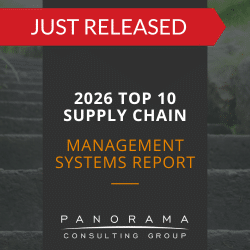- Misaligned corporate culture often derails even the most robust digital initiatives, making cultural alignment critical for success.
- Employees frequently resist new technologies, like ERP systems, due to fear of disruption and inadequate communication from leadership.
- A unified executive team ensures consistent messaging and clearer direction, preventing confusion and fostering trust throughout the organization.
- Traditional silos and hierarchies hinder the collaboration and agility required for adopting technologies such as AI-powered ERP or supply chain software.
- Proactive strategies, including upskilling employees and appointing cultural ambassadors, help bridge the gap between corporate culture and digital transformation goals.
Digital transformation is no longer a competitive advantage—it’s a survival strategy. As companies adopt cutting-edge technologies, one critical factor often determines success: corporate culture alignment.
Misaligned organizational culture can act as a hidden iceberg, derailing even the most well-funded digital initiatives.
The intersection of corporate culture and technology raises questions for leaders: How do you address cultural barriers to digital transformation? What strategies drive successful organizational culture change?
For executives, understanding these challenges isn’t optional—it’s fundamental to securing long-term value from digital investments.
Today, we’ll explore the relationship between corporate culture and digital transformation, unpack key challenges, and offer actionable strategies to navigate them effectively.
The Disconnect Between Corporate Culture and Technology
Why Culture is Central to Digital Transformation
Digital transformation initiatives often focus on technology, yet they succeed or fail based on the people behind the systems. The failure to align corporate culture with technological goals results in resistance, miscommunication, and stagnation.
For example, the implementation of an ERP system demands cross-functional collaboration and a shift in how employees perform workflows. Employees might resist change because they fear job loss, lack clarity on the transformation’s goals, or distrust leadership’s intentions.
When companies don’t prioritize organizational culture change, technology investments often fail to deliver their expected ROI. As an ERP consulting company, we frequently diagnose cultural misalignment as a root cause of ERP failure. Addressing this requires a systemic approach, integrating cultural assessments into the digital transformation roadmap.
A Failed Payroll System Implementation
Panorama’s Expert Witness team was retained to provide a forensic analysis and written report to the court regarding the failed implementation of a major software developer’s ERP/payroll system.
Key Challenges in Aligning Corporate Culture with Digital Transformation
1. Resistance to Change
Resistance to change is one of the most pervasive cultural barriers to digital transformation. Employees accustomed to established processes may view new technology as a threat rather than a tool for growth. This issue is compounded by poor communication, which breeds uncertainty.
Leaders often assume that providing technical training is sufficient to drive adoption. However, without addressing the emotional and psychological impact of change, resistance can intensify. For example, when rolling out an SCM system, a regional procurement team may resist using a centralized inventory tracking feature. They might prefer sticking to their manual processes, which they feel give them more control and flexibility over local operations. This resistance can slow down adoption and undermine the system’s intended benefits.
The solution lies in developing an organizational change management strategy. Early involvement of employees in decision-making and transparent communication about the purpose and benefits of the transformation can mitigate resistance.
2. Leadership Misalignment
Cultural alignment begins at the top. However, many digital transformation projects reveal a disconnect among leaders regarding goals, priorities, and execution. Misaligned leadership creates confusion for employees, undermining efforts to instill a cohesive culture.
Consider a scenario where the IT team is seeking more modern enterprise software, so they spearhead an ERP comparison and then an implementation of the best-fit system Yet, operations leaders hesitate to adopt the system. This lack of consensus sends mixed signals to employees, fostering doubt about the transformation’s viability.
To overcome this, leaders must present a unified front. Aligning leadership teams around clear objectives and KPIs ensures that the vision for digital transformation cascades seamlessly throughout the organization.
3. Outdated Organizational Structures
Traditional hierarchies often clash with the collaborative nature of digital transformation. Technology demands faster decision-making, cross-functional teamwork, and the ability to pivot quickly. Yet, entrenched structures stifle these processes.
For example, implementing advanced supply chain software requires data sharing between procurement, manufacturing, and distribution. However, siloed departments might resist sharing information, perceiving it as a loss of control.
Addressing this challenge involves reengineering processes and redefining roles to align with the demands of digital tools. Cross-functional teams can foster a more adaptive culture, breaking down silos and encouraging collaboration.
4. Lack of Skills and Digital Mindset
Even the most advanced technology fails without the right talent. Many organizations underestimate the importance of a digital-first mindset, leaving employees ill-equipped to handle new systems. This skills gap perpetuates resistance and slows adoption.
For example, our business software consultants often recommend implementing AI-driven analytics. However, without training employees on how to interpret data and make decisions based on it, the technology’s potential goes unrealized.
Investing in upskilling programs and hiring enterprise software consultants to guide the process can bridge this gap. By embedding a learning culture, organizations empower employees to adapt and thrive.
How to Break Down Cultural Barriers
1. Conduct a Cultural Audit Before Transformation
Before embarking on any digital initiative, assess your organization’s culture. Identify potential cultural barriers to digital transformation, such as hierarchical bottlenecks, resistance-prone departments, or unclear communication. We recommend using surveys, focus groups, and interviews to gauge employee readiness and align leadership teams.
2. Engage Employees Early and Often
Transparency is critical. When employees feel involved in the transformation journey, they are more likely to support it. Regular updates, open forums, and interactive training sessions can demystify complex processes and address fears.
For instance, when deploying new ERP software, we recommend providing employees with hands-on experience before go-live. Highlight how the software will simplify their tasks, improve efficiency, and align with organizational goals.
3. Align Technology with Culture
Digital transformation doesn’t mean imposing technology on your culture—it means finding a balance. Choose flexible solutions that can be tailored to your organizational needs rather than forcing employees to adapt to rigid systems.
Consider an organization with a manual approval process for purchase orders that decides to configure the ERP system to replicate this workflow digitally. This approach allows employees to follow the same familiar steps but with automated tracking and notifications. As they grow comfortable with the system, the company can introduce additional features, like AI-driven approval recommendations.
4. Prioritize Change Management
Change management must be baked into the transformation process from day one. Beyond technical training, you should equip employees with the skills to adapt to new workflows and collaborate effectively.
Consider creating change champions or developing cross-functional task forces to champion the transformation. These teams can act as liaisons between leadership and employees, providing feedback, driving engagement, and addressing concerns.
5. Redefine Success Metrics
Traditional KPIs often measure technology adoption in isolation, ignoring cultural impacts. We recommend redefining success metrics to include employee satisfaction, the frequency of cross-departmental collaboration, and the time it takes teams to make decisions using real-time data.
Align Corporate Culture with Digital Transformation for Lasting Success
Aligning corporate culture with digital transformation is a complex, multifaceted endeavor, but it is not insurmountable. By understanding and tackling cultural barriers to digital transformation, you can create a resilient, adaptive organization poised for sustained success.
The journey to cultural alignment requires more than tools; it demands vision, strategy, and empathy. With the right approach, your organization can seamlessly bridge the gap between corporate culture and technology, ensuring every employee contributes to—and benefits from—the digital future. Contact us today for a free ERP consultation.














